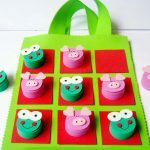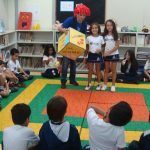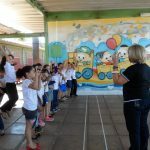
The new method emerged from the need to innovate through new styles of teaching children to learn math. The idea was tested and the children loved it, as there is a very big difference compared to viewing the accounts written on the blackboard. The fact of being able to manipulate and move the objects of arithmetic operations completely changes the meaning for children, even because they are items that they are very familiar with. In addition to being fundamental in creating a train of thought, this powerful toy can be an important platform
in teaching mathematics. Great isn't it? Here are some tips for teaching with LEGO:


Teach students to take responsibility for their learning tool, have them return their bag of parts. Bags need to be sealed and blocks separated, unless they are given a set of towers, which is often used in the exercises with LEGO as the main activity, and students are quite independent when they receive bags labeled with pieces specific.

Using the pieces of different styles as shown in the image above. In New York, United States, the idea came from teacher Alycia Zimmerman, who used the function of the pieces to see the difficulty that her third grade students had in learning fractions. According to her, the fraction represents one of the most difficult stages for children and she needed to find a way to facilitate teaching.
Since the 1950s, LEGO, a leader in the toy market, bears the same name as the toy that for many years has continued to be successful on children's toy shelves.
The idea is to get away from the traditional style of teaching, and in a way bring innovation in teaching methods. Therefore, it is a simple method that breaks the paradigms of traditional teaching, transforming new learning into something much more fun and, consequently, productive.
Did you like it? Share this post on your social network
 BOARD GAMES IN EARLY CHILDHOOD EDUCATION
BOARD GAMES IN EARLY CHILDHOOD EDUCATION
 MAGIC WORDS FOR EARLY CHILDHOOD EDUCATION
MAGIC WORDS FOR EARLY CHILDHOOD EDUCATION
 RECREATIONAL ACTIVITIES FOR EARLY CHILDHOOD EDUCATION
RECREATIONAL ACTIVITIES FOR EARLY CHILDHOOD EDUCATION
 GROUP DYNAMICS FOR TEACHERS
GROUP DYNAMICS FOR TEACHERS
 BARBANTE DYNAMICS TO BACK TO CLASSES
BARBANTE DYNAMICS TO BACK TO CLASSES
 PLAY TO CALM THE CHILDREN
PLAY TO CALM THE CHILDREN
This site uses Akismet to reduce spam. Learn how your comment data is processed.


